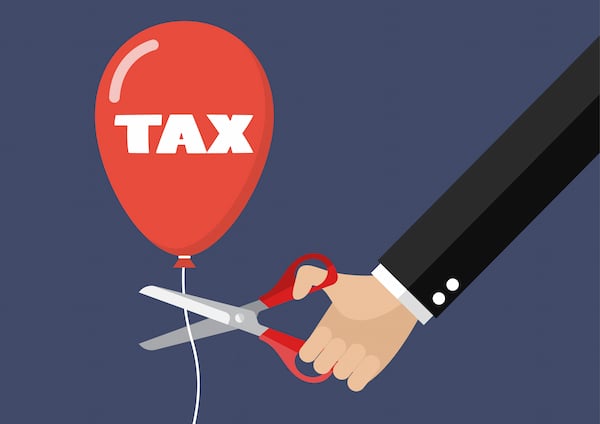401(k) matching contributions are one of the most powerful tools employers can use to boost retirement savings and increase plan participation. They act like a guaranteed return on employee salary deferrals—essentially “free” money.
But despite their value to employees, matching contributions are not always the best fit for every 401(k) plan. In some cases, nonelective contributions—such as profit sharing—may better serve a company’s goals. Understanding your matching options is key to designing a 401(k) plan that meets the needs of your business and workforce.
What Is a 401(k) Matching Contribution?
A 401(k) matching contribution is an employer-provided benefit where the company contributes additional funds to an employee’s retirement account based on the amount the employee contributes from their own salary. Their amount must be calculated using a predetermined formula defined in the plan document.
Unlike nonelective contributions—which are made to all eligible employees regardless of whether they defer—matching contributions require employee action to receive.
Some employers make matching contributions on a per-payroll basis, while others match deferrals annually after the plan year ends.
The components of a match formula
-
- Match rate: The percentage the employer contributes in relation to the employee’s salary deferrals (e.g., 50%, 100%). This determines the proportion of employee deferrals that will be matched.
- Deferral limit: The cap on the portion of compensation that is eligible for a match. For example, a plan might match deferrals only up to 6% of compensation.
- Maximum Match: The total percentage of compensation that an employer may contribute under the match formula. It results from the combination of the match rate and deferral limit (e.g., 50% of 6% = 3%).
The difference between a uniform or tiered formula
-
- Uniform match: same match rate applies across the full deferral range.
Examples include:
-
-
-
- 100% match up to 4% of compensation. Every dollar deferred up to 4% of compensation is matched dollar for dollar.
-
-
-
-
-
- 50% match up to 6% of compensation. Every dollar deferred up to 6% of compensation is matched 50% (total match = 3%).
-
-
-
- Tiered match: Different match rates apply to different portions of deferrals.
Example: 100% on the first 4% of compensation, plus 50% on the next 2% (total match = 5%).
Tiered match formulas are common in safe harbor plans, while uniform match formulas are often used in discretionary match structures.
Safe Harbor 401(k) Matching Contributions
Safe harbor 401(k) plans are the most popular type of 401(k) plan sponsored by small businesses today. They automatically pass the ADP/ACP and top heavy nondiscrimination tests, allowing business owners to contribute up to annual IRS limits ($23,500 + $7,500 catch-up for 2025) without risk of refunds or additional contributions.
To qualify, the employer must make either a safe harbor matching or nonelective contribution. Safe harbor match options include:
-
- Basic match: 100% of the first 3% of compensation, plus 50% of the next 2% (4% total)
- Enhanced match: Must be at least as generous as the basic match and cannot apply to more than 6% of compensation. A common formula is 100% on the first 4%.
- QACA match: For Qualified Automatic Contribution Arrangements. Requires at least 100% on the first 1% of compensation and 50% on the next 5% (3.5% total)
Employers may also make a discretionary matching contribution on top of a safe harbor match or nonelective contribution and remain exempt from the ADP/ACP and top-heavy nondiscrimination tests if the discretionary match meets two conditions:
-
- Its formula is based on no more than 6% of compensation
- Its total does not exceed 4% of compensation
Vesting rules for safe harbor matches
-
- Basic and enhanced safe harbor matches must be 100% immediately vested
- QACA matches can be subject to a 2-year cliff vesting schedule
- Additional discretionary matches may follow a 3-year cliff or 6-year graded vesting schedule
Eligibility rules for safe harbor matches
-
- Employers can’t require employees to work a minimum number of hours or be employed on the last day of the year to receive a safe harbor match
Non-Safe Harbor 401(k) Matching Contributions
Non-safe harbor matching contributions provide greater flexibility than safe harbor ones but require the plan to pass the ACP test to ensure fairness.
Key features:
-
- Discretionary: Employers can change the match formula annually—or make no contribution at all
- Stretch match: Employers may require higher deferral rates to earn the full match. For example, 25% of salary deferrals up to 12% of compensation for a 3% match
- Vesting schedules: May follow a 3-year cliff or 6-year graded schedule
- Eligibility rules: Plans may require minimum service or employment on the last day of the year to qualify
Roth 401(k) Matching Contributions
Historically, matching contributions were always made on a pre-tax basis—even when an employee’s salary deferrals were Roth. Employers may now offer Roth matching contributions under SECURE 2.0.
Roth matching contributions are subject to the following rules:
-
- Only available to employees who are fully vested in their match
- Subject to income tax in the year contributed
- Not subject to early withdrawal penalties if left in the plan until a qualified distribution
401(k) providers and payroll systems are still adapting to support Roth matching contributions. Employers should confirm provider readiness before offering this option.
Employers that allow Roth matching must eventually amend their plan documents to reflect the change. The current amendment deadline is December 31, 2026.
401(k) Matching Contribution True-Ups
If an employer makes matching contributions on a per-payroll basis - but has specified an annual allocation period for matching contributions in the plan document - they may owe a "true-up" contribution to some employees.
A true-up contribution ensures that employees who contribute salary deferrals inconsistently throughout the year—such as those who max out early or take time off—still receive the full match for the year. Without a true-up, employees making large early contributions may receive less match if their employer matches on a per-payroll basis.
How match true-ups are calculated
At year-end, the employer calculates the match that employees would have received had it been based on annual compensation and deferrals. Then, that amount is compared to what employees actually received during the year. If there’s a shortfall, the employer makes a "true-up" contribution.
Example: An employee earning $80,000 contributes 6% of their salary in the first half of the year and then stops. If the employer matches 50% of up to 6% per paycheck, the employee only receives a partial match. A true-up at year-end ensures they receive the full 3% employer match ($2,400).
When to Use 401(k) Matching Contributions
Matching contributions are a popular feature in many 401(k) plans, but they’re not always the best fit. In some cases, nonelective contributions—such as profit sharing—may better serve a company’s needs by delivering more predictable costs, reaching more employees, or enabling higher contributions for business owners. Understanding when each approach works best is key to designing a 401(k) plan that delivers maximum value for both employers and employees.
Here are some considerations for employers when deciding between matching and nonelective contributions for their 401(k) plan.
When matching contributions make sense
-
- You want to encourage employee deferrals. Matches are a proven way to boost participation and deferral rates.
- Your plan struggles to pass ADP testing. A match can help a plan pass ADP testing by incentivizing higher salary deferrals among non-highly compensated employees (NHCEs).
- You want a lower-cost way to meet safe harbor requirements. If not all employees defer, a match may be cheaper than a 3% nonelective contribution.
When nonelective contributions may be a better fit:
-
- You want predictable costs. Nonelective contributions apply uniformly, making budgeting easier.
- You want to maximize business owner contributions. A 3% safe harbor nonelective can support cross-tested or new comparability profit sharing allocations.
- You want to help low-income employees save for retirement. A nonelective approach ensures they receive a retirement benefit even if they can’t afford to defer.
Final Thoughts
401(k) matching contributions can be a powerful way to incentivize employee savings while helping employers meet plan compliance and design goals. However, they are not a one-size-fits-all solution.
Understanding your options—safe harbor vs. non-safe harbor, pre-tax vs. Roth matching, and how match formulas and vesting schedules impact cost and participation—is critical to creating a retirement plan that works for your business and your team.





